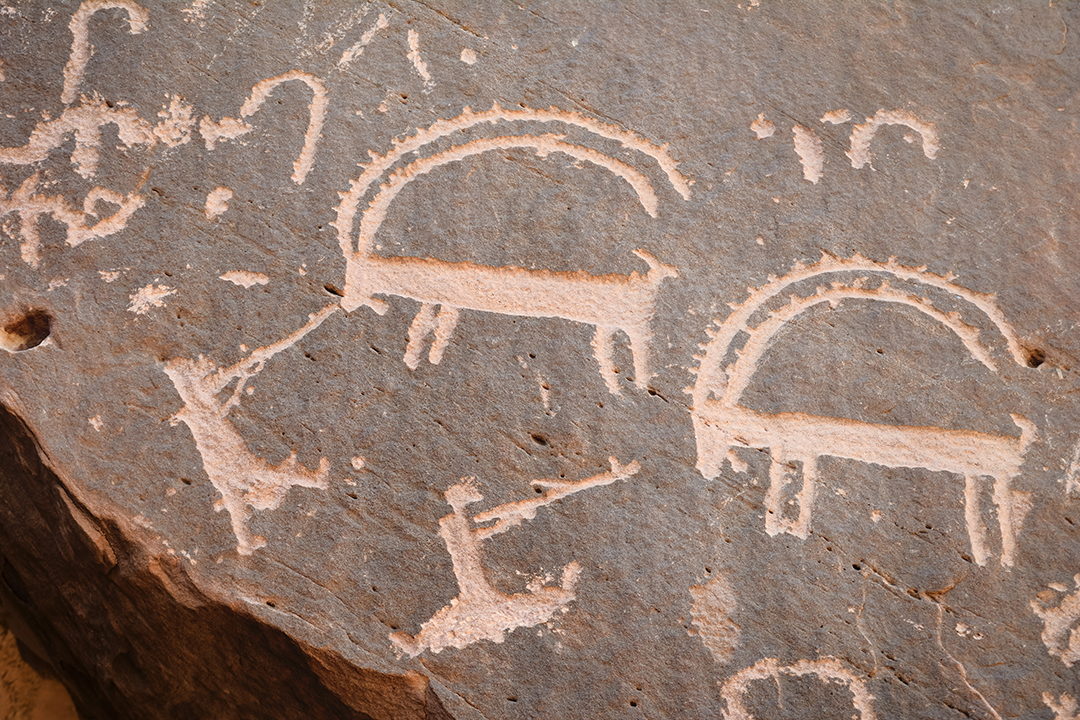More large mammals roamed Saudi Arabia than previously thought

One of the petroglyphs found by the researchers.
The study provides the most complete list to date of large mammals from the Holocene period and provides a benchmark for rewilding efforts in the region
A new study by researchers at King Abdullah University of Science and Technology (KAUST) and Taibah University has identified 15 large mammal species – three times more than previously thought – that lived in the Arabian Peninsula within the last 10000 years. The study, which can be read in the Journal of Biogeography, provides the most complete list - to date - of large mammals from this period and provides a benchmark for rewilding efforts in the region.
"Restoration is not just about plants, for animals play a key role in vegetation communities. In highlighting which large mammals became extinct, we are providing information that will help governments decide which mammals to reintroduce in the future," said Christopher Clarke, a senior project manager at KAUST and contributor to the study.
To make their findings, Clarke and his colleague, Sultan M. Alsharif, an associate professor in the biology department at Taibah University, examined thousands of petroglyphs (ancient rock carvings) collected from their own scientific expeditions, available in published sources, and even from social media, on which people have shared their amateur archeological discoveries. The addition of social media posts gave the researchers access to a large collection of petroglyphs unknown to the scientific community.
"Our paper shows the peninsula to have been far more diverse in large mammals than previously thought,” said Alsharif.
The majority of the 15 mammals come from Africa, including lions and cheetahs. The study also adds two species never known to live in the Arabian Peninsula before: the greater kudu and the Somali wild ass.
Among the 15, the Arabian Peninsula has already reintroduced the oryx and has plans to reintroduce the cheetah. As for the other 13 species, the researchers noted that for those not extinct worldwide, they will need to be examined individually to decide whether they should be reintroduced.

